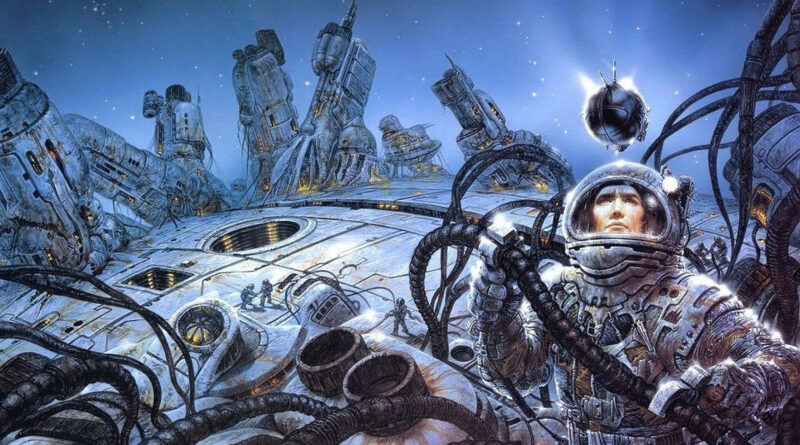First Contact Science Fiction and Hard Science Fiction
Science fiction, as a genre, has long been revered for its ability to transport readers to distant worlds, explore advanced technologies, and contemplate the mysteries of the universe. Within the vast landscape of science fiction, two distinct sub-genres have emerged: first contact science fiction and hard science fiction. Each offers its own unique blend of speculative concepts and storytelling elements. In this article, we will delve into the intersection of these two sub-genres, exploring how they can be seamlessly fused together to create captivating narratives that both entertain and educate.
Understanding First Contact Science Fiction
First contact science fiction revolves around the idea of humanity encountering extraterrestrial civilizations for the first time. These narratives often explore themes of exploration, communication, and the implications of contact with alien species. From peaceful encounters to intergalactic conflicts, first contact stories offer a glimpse into the possibilities of interstellar diplomacy and the challenges of understanding beings from other worlds.
Exploring Hard Science Fiction
Hard science fiction, on the other hand, is rooted in scientific accuracy and realism. These stories place a strong emphasis on scientific principles, theories, and technologies, striving to present plausible scenarios that adhere to known scientific laws. Hard sci-fi often explores themes such as space exploration, future technologies, and the impact of scientific advancements on society.
The Fusion of First Contact and Hard Science Fiction
Grounded in Scientific Realism
One of the key aspects of the fusion of first contact and hard science fiction is the grounding of extraterrestrial encounters in scientific realism. Rather than relying solely on speculative or fantastical elements, these narratives incorporate scientific principles and theories to create plausible scenarios. Whether it’s the physics of interstellar travel or the biology of alien life forms, the emphasis on scientific accuracy adds depth and credibility to the story.
Exploring the Implications of First Contact
Incorporating hard science fiction elements into first contact stories allows authors to explore the implications of contact with alien civilizations in a more nuanced and realistic manner. From the challenges of interstellar communication to the cultural differences between species, these narratives delve into the complexities of intergalactic diplomacy and the potential consequences of our interactions with extraterrestrial beings.
Balancing Science and Speculation
Finding the balance between scientific accuracy and speculative storytelling is essential in fusing first contact and hard science fiction. While maintaining a foundation of scientific realism, authors have the freedom to explore imaginative concepts and scenarios that push the boundaries of our understanding of the universe. Whether it’s the discovery of new forms of propulsion or the exploration of alien civilizations, the fusion of these two sub-genres offers endless possibilities for creative storytelling.
Examples of First Contact Science Fiction with Hard Science Fiction Elements
“Contact” by Carl Sagan
Carl Sagan’s novel “Contact” exemplifies the fusion of first contact and hard science fiction. The story follows a scientist who discovers evidence of extraterrestrial intelligence and embarks on a journey to make contact with an alien civilization. Grounded in scientific realism, the novel explores themes of communication, faith, and the search for meaning in the cosmos.
“The Three-Body Problem” by Liu Cixin
Liu Cixin’s “The Three-Body Problem” is another prime example of first contact science fiction with hard science fiction elements. Set against the backdrop of China’s Cultural Revolution, the novel explores humanity’s encounter with an alien species and the profound implications it has on society. Blending scientific concepts with philosophical themes, the story offers a thought-provoking exploration of the nature of existence and the challenges of communication across vast distances.
Crafting Compelling Narratives
Research and Attention to Detail
Crafting a compelling fusion of first contact and hard science fiction requires thorough research and attention to detail. Authors must familiarize themselves with scientific principles and theories relevant to their story, ensuring that their narratives are grounded in realism. From the mechanics of space travel to the biology of alien life forms, accuracy is key to immersing readers in the world of the story.
Character Development and Worldbuilding
In addition to scientific accuracy, effective storytelling in first contact and hard science fiction relies on strong character development and immersive worldbuilding. Characters must be well-rounded and relatable, facing moral dilemmas and personal challenges as they navigate the complexities of interstellar encounters. Likewise, the world in which the story takes place should feel rich and immersive, with detailed descriptions of alien worlds, cultures, and technologies.
Conclusion
The fusion of first contact science fiction and hard science fiction offers a compelling blend of scientific realism, speculative storytelling, and imaginative exploration. By grounding extraterrestrial encounters in scientific accuracy and exploring the implications of contact with alien civilizations, authors can create narratives that both entertain and provoke thought. Whether delving into the mysteries of the cosmos or contemplating the nature of existence, these stories invite readers on a journey of discovery that transcends the bounds of our own world.

